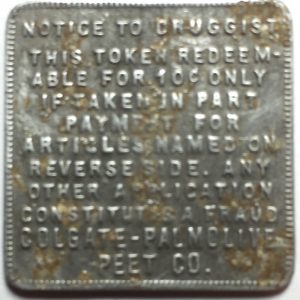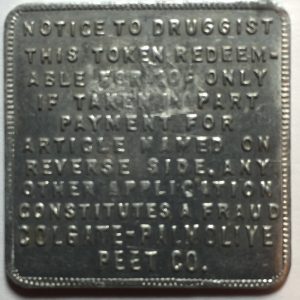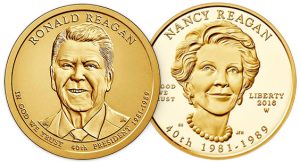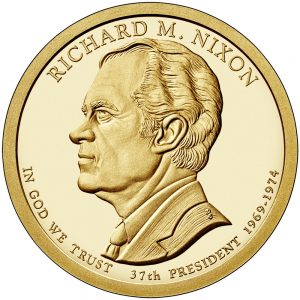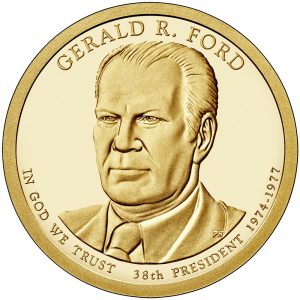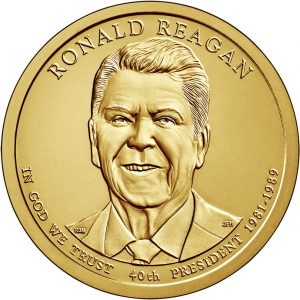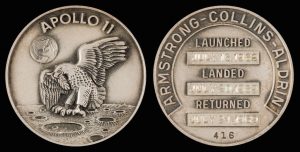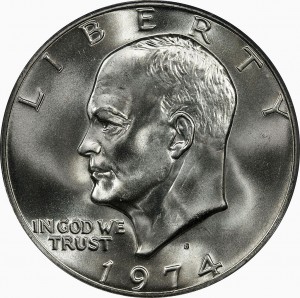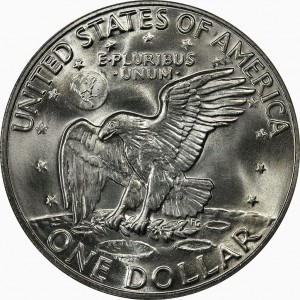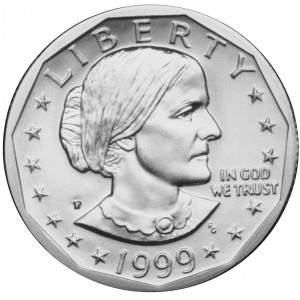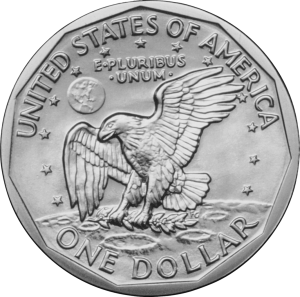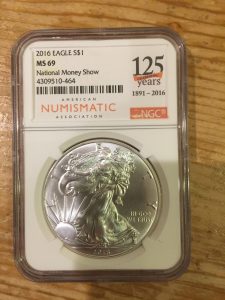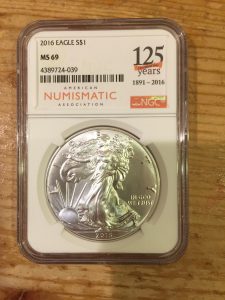A Good Step For the Future of the NLG
 Last week, the Numismatic Literary Guild (NLG) announced the appointment of Dr. Ursula Kampmann of Lörrach, Germany, to their Board of Governors. It is an announcement that has more significance to the numismatic community than captured in a press release.
Last week, the Numismatic Literary Guild (NLG) announced the appointment of Dr. Ursula Kampmann of Lörrach, Germany, to their Board of Governors. It is an announcement that has more significance to the numismatic community than captured in a press release.
Dr. Kampmann is an accomplished numismatist with a significant international following. I “met” her through CoinsWeekly (coinsweekly.com), an English language website that reports numismatic news from all over the world. She contacted me about a post I made, and it led me to become a regular reader.
CoinsWeekly looks at the entire world of numismatics, not from a single country. There have been articles that cover special issues, the appeal of coins minted outside of the United States, and even criticizes U.S.-based numismatic news for their myopic view of collecting.
The appeal of having Dr. Kampmann working with the NLG is to inject her experience outside of the United States into the hobby. The hobby needs new ideas and to break out of its old ways to grow; having a view outside of the United States border will have a significant impact.
Dr. Kampmann is not so much of an outsider as one might think. Readers of CoinsWeekly will recognize that the stories understand the U.S.-based hobby but have constructive criticism based on what is happening in the rest of the world.
She can help influence the authors and writers of numismatic content to understand the hobby more broadly than the myopic U.S. view. There is a big world outside of the U.S. borders producing coins that have great appeal to many. Those of us who write about numismatics must learn to think beyond collections of discs that all look the same.
Dr. Kampmann’s appointment appears to be the first move by new Executive Director Charles Morgan, editor of CoinWeek. Morgan, who is also known for wanting the hobby to break away from the mindset of the blue and brown albums, appears to be off to a good start. There is a lot we can learn from our European counterparts. I hope the U.S.-based writers will take this opportunity to grow.
Clean history for 20-cents
Proof that numismatics can be used to learn more about history through the economics they represent. Sometimes more telling than coins are exonumia items which have more descriptive value than coins.
Rummaging through a bag of small items recently purchased from an estate sale I found two square tokens. Both are made of aluminum and measured 27mm per side (about 1-inch). Both offer 10-cents off a purchase of personal care products. One will provide a discount on Colgate’s or Palmolive Shave Cream and the other for 10-cents off for the purchase of Colgate’s Ribbon Dental Cream.
- Good for 10c on your next purchase of Colgate’s or Palmolive Shave Cream
- Reverse of 10c token for Colgate’s or Palmolive shaving cream
While these tokens are very interesting, I want to know when they are from? After examining both sides of each token and not finding any indication of a date, it was time to turn to an Internet search engine to figure out when this token could have been made. We start with looking for the company and product information for Colgate-Palmolive-Peet. From this, we found the history of today’s Colgate-Palmolive.
- Good for 10c on purchase price of Colgate’s Ribbon Dental Cream
- Reverse of 10c off purchase of Colgate’s Ribbon Dental Cream token
The company was founded in 1806 by English immigrant soap and candle maker William Colgate. Colgate began by making candles, soap and starch in a factory on Dutch Street in New York City under the name William Colgate & Company. Colgate was the first company to begin selling individual soap cakes in uniform sizes. Following William Colgate’s death in 1857, his son Samuel Colgate reorganized business as Colgate & Company. Samuel did not want to run his father’s business but felt its continued existence with the right thing to do.
THIS TOKEN REDEEM-
ABLE FOR 10¢ ONLY
IF TAKEN IN PART
PAYMENT FOR
ARTICLE NAMED ON
REVERSE SIDE. ANY
OTHER APPLICATION
CONSTITUTES A FRAUD
COLGATE-PALMOLIVE
PEET CO.
Colgate & Company continued to grow. By 1866 the company introduced the first perfumed soap which was then followed by Cashmere Bouquet. It was the first milled perfumed toilet soap, became a registered trademark in 1872. The next year Colgate introduced their first toothpaste that were sold in jars. The product did not sell well until 1896 when Colgate began selling Colgate Ribbon Dental Cream in collapsable tubes. By 1908 Colgate ended production of their jarred toothpaste.
In 1898, B.J. Johnson developed a formula for soap made of palm and olive oils. The soap was so popular that the company was renamed “Palmolive” to reflect the name of its most popular product (I bet you didn’t know where the name came from). By the turn of the century, Palmolive was the world’s best selling soap.
During this time, the Peet Brothers in Missouri was looking to expand their soap business when the opportunity for them to buy Palmolive from B.J. Johnson. In 1926, the merger of the two companies became Palmolive-Peet Company. Two years later in 1928 the Palmolive-Peet merged with Colgate to form Colgate-Palmolive-Peet. Peet was dropped from the name in 1953 to Colgate-Palmolive Company as it is still known as today.
Let’s start with the obvious. Since Colgate-Palmolive-Peet only existed from 1928 through 1953, it would be logical to assume that the token is from that time period.
To try to narrow down the time-period further, I searched for similar tokens to see if I could find other evidence. While searching, I found a set of similar tokens issued by the Palmolive-Peet Company. This suggests that the company could have continued issuing similar tokens following the 1928 merger.
Trade and tax tokens were popular in the use of trade in the 1920s through the depression. In fact, during the depression, many of these tokens were traded as currency in areas where currency was in short supply. However, many of these tokens stopped being used and circulated in 1942. Since aluminum was part of the scrap metal drives that were used to gather the materials to build war equipment, many of these tokens were turned in to merchants who returned them to the companies for cash. Many were later scrapped.
Without having further information the best I can do is narrow the period it was issued from 1928 through 1941.
As part of my search, I found a few listings on eBay that claimed that these tokens were issued in the 1920s. As we have seen that may not be correct. While being issued in 1929 may be possible, it is more likely that these tokens were issued in the early 1930s.
Of course if you have more information about these tokens please leave comments below.
July 2016 Numismatic-related legislation
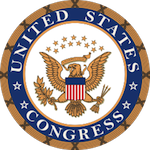 As we do every month, we look back at the previous month’s activity in congress that will affect us numismatically. July started with congress on their 4th of July break coming back for a one week session before leaving to attend their respective conventions.
As we do every month, we look back at the previous month’s activity in congress that will affect us numismatically. July started with congress on their 4th of July break coming back for a one week session before leaving to attend their respective conventions.
Prior to leaving, congressed passed the United States Semiquincentennial Commission Act (Public Law 114-196). The law authorizes the formation of a commission to organize the national celebration of the 250th anniversary of the founding of the United States on July 4, 2026. It was signed by President Obama on July 22, 2016. Section 5, Paragraph (c)(2)(F) of the new law recommends that the commission encourages “Federal agencies to integrate the celebration of the Semiquincentennial into the regular activities and execution of the purpose of the agencies through such activities as the issuance of coins, medals, certificates of recognition, stamps, and the naming of vessels.”
Those of us who are old enough to remember, this was the first time in the modern era that circulating commemoratives were issued. The quarter, half-dollar, and dollar coins all had special reverse designs that were issued in 1975 and 1976. These coins remain popular amongst collectors and an interesting curiosity when non-collectors find the quarter with the drummer boy reverse in their pocket change. Although circulating commemoratives are not a new concept since the advent of the 50 State Quarters series, there is an opportunity to consider something interesting to celebrate on all U.S. coinage rather than just certain denominations.
The only other piece of legislation legislation of concern was that the Financial Services and General Government Appropriations Act of 2017 passed the House on July 7, 2016. The bill authorizes the U.S. Mint to withdraw up to $30 million from the Public Enterprise Fund for its operations. This is an increase of $10 million from when the bill was originally submitted in June.
If you missed my previous explanation on the funding of the U.S. Mint, you can read “No Taxpayer Money Is Used by the US Mint” at your leisure.
U.S. Mint gets partisan
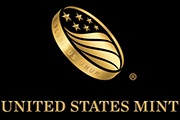 Like almost every business and government agency, the U.S. Mint has been leveraging social media to engage collectors and possibly attract new collectors to purchase coins. One of the places that the U.S. Mint engages the public is on Facebook.
Like almost every business and government agency, the U.S. Mint has been leveraging social media to engage collectors and possibly attract new collectors to purchase coins. One of the places that the U.S. Mint engages the public is on Facebook.
During the last few weeks the U.S. Mint has been appropriately promoting their products but interspersed between their posts are quite a number of posts have been several posts talking about the history of the president featured on the last coin issued in the Presidential $1 Coin program.
The 39th and final coin of the Presidential $1 coins honors Ronald Reagan, the 40th president. Bypassing Jimmy Carter who has survived for 91 years, Reagan ends the series. As part of the release of the Reagan dollar, the U.S. Mint is promoting the release of the coin but seems to have gone overboard promoting Reagan and not the coin.Aside from their over promotion of Reagan on social media, the U.S. Mint has a special section about Reagan’s life on their website. The information rivals something that would appear something on a history-related website or the Reagan Library.
Regardless of how one feels about Reagan, a federal agency should never favor one president over another. If the U.S. Mint has done the same for each of the presidents, then this would not be a problem. But to single out Reagan is counter to the nonpartisan mission of the U.S. Mint.
Why did the U.S. Mint pick Reagan for this type of treatment? Aside from the partisan issues, Reagan’s presidency would not be considered the most historic of those honored on dollar coins released in 2016. Gerald Ford was appointed Vice President in 1973 upon the resignation of Spiro Agnew. This was the first time that someone was appointed Vice President under the terms of the 25th Amendment to the U.S. Constitution. Prior to becoming Vice President, Ford was the House Minority Leader at the time and was well respected by both sides of the aisle.
Ford became the 38th president following the resignation of Richard Nixon marking the first time a president rose to the office without being elected to a national office. Using the 25th Amendment, Ford appointed Nelson Rockefeller (R-NY) as the Vice President.
Aside from presiding over the nation’s bicentennial, his transition from House Minority Leader to President not only tested the constitution but helped prove its strength in society. Although it was a difficult period for economic and world history, Ford was a significant figure in maintaining the union during this time.
Political rhetoric and correctness may have been a driver for the U.S. Mint to single out Reagan. Reagan was just another president compared to the tumultuous rise of Ford. If one president had to be honored for 2016, Ford’s presidency was more historic and deserves recognition.
2016 Presidential Dollar Releases
The Eagle Has Landed
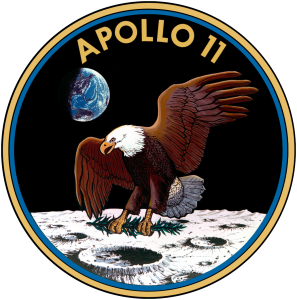 It was July 20, 1969, Neil Armstrong and Edwin “ Buzz” Aldrin, made history by being the first humans to land on Earth’s only natural satellite. A mere 238,900 mile trip began with the launch of the Saturn V rocket from the Kennedy Space Center on July 16, 1969, with Michael Collins who orbited over the moon in the command module, the trip fulfilled the promise of President John F. Kennedy who said to congress on May 25, 1961, “I believe that this nation should commit itself to achieving the goal, before this decade is out, of landing a man on the moon and returning him safely to the earth.”
It was July 20, 1969, Neil Armstrong and Edwin “ Buzz” Aldrin, made history by being the first humans to land on Earth’s only natural satellite. A mere 238,900 mile trip began with the launch of the Saturn V rocket from the Kennedy Space Center on July 16, 1969, with Michael Collins who orbited over the moon in the command module, the trip fulfilled the promise of President John F. Kennedy who said to congress on May 25, 1961, “I believe that this nation should commit itself to achieving the goal, before this decade is out, of landing a man on the moon and returning him safely to the earth.”
Kennedy would have been pleased with the events of 47 years ago, today.
Michael Collins design the mission insignia. Collins said that he wanted a symbol to represent a “peaceful lunar landing by the United States.” He also left the names of the astronauts off of the insignia so that it would represent everyone who worked on the mission. It is one of the few mission insignias that does not include the name of the astronauts.
The first numismatic-related item that used the Apollo 11 mission insignia were the medals made by the Robbins Company of Attleboro, Massachusetts. Although there were many space-flown numismatics that have surfaced over the years, the most famous from Apollo 11 was the sterling silver Robbins Medal that was presented to Wally Schirra by Neil Armstrong. Armstrong and Schirra were good friends. He gave the medal to honor his friend, the first three-time astronaut who retired just before the Apollo 11 flight.This medal was sold for $33,460.00 on April 18, 2013 by Heritage Auctions.
In March, before the Apollo 11 launch, President Dwight Eisenhower died of congestive heart failure at the age of 78. To honor the late president, congress passed the bill to produce what ended up to be the last large dollar coin with the portrait of Eisenhower. It was Rep. Bob Casey (D-TX) who remembered that Eisenhower created NASA and proposed that the reverse of the coin use the Apollo 11 mission insignia rather than just a heraldic eagle.
The Eisenhower dollar was released in 1971 and struck until 1978. Other than relief and varieties, the only design change was made in honor of the nation’s bicentennial in 1975-76.
- Eisenhower Dollar Reverse featuring the Apollo 11 mission insignia
Beginning in 1976, the U.S. Mint was looking to reduce the costs of coin production and was testing different shapes and compositions for a new dollar coin. In order to appease the powerful vending machine industry, the result was a coin that was too similar in size and composition to the quarter dollar. Congress made the decision to honor Susan B. Anthony and leave the Apollo 11 mission insignia on the reverse.
- Susan B. Anthony dollar
- Reverse of the Susan B. Anthony dollar featuring the Apollo 11 mission insignia
Chief Engraver Frank Gasparro designed the reverse for both the Eisenhower and SBA dollars using the Apollo 11 mission insignia. An iconic design even though the coins were less than successful.
- Apollo mission insignia courtesy of NASA.
- Apollo 11 flown Robbins Medal courtesy of Heritage Auctions
- Coin images courtesy of the U.S. Mint.
125 Year Celebration
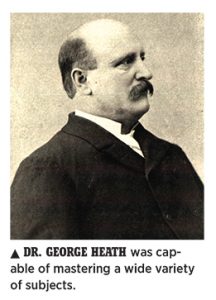 It has been 125 years since Michigan physicist Dr. George Heath founded the American Numismatic Association in 1891. Heath, who operated a coin business on the side, began this journey by publishing his own magazine in 1888 called The Numismatist. He used the magazine as a call to other collectors to create the ANA.
It has been 125 years since Michigan physicist Dr. George Heath founded the American Numismatic Association in 1891. Heath, who operated a coin business on the side, began this journey by publishing his own magazine in 1888 called The Numismatist. He used the magazine as a call to other collectors to create the ANA.
The ANA will celebrate this milestone at the upcoming World’s Fair of Money. In an interesting coincidence, or maybe planning, the celebration will be help practically next door to the place called “The Happiest Place on Earth.” Irrespective of whatever issues anyone sees or perceives with regard to the ANA, you have to admit that an organization like the ANA to survive 125 years is pretty amazing.
If you are interested in a long-form history of the ANA, I recommend reading “125 Years of Collecting with the American Numismatic Association” written by Q. David Bowers. It is not a quick read, but 125 years of history was not easy to create. The current page is in seven parts with an eighth promised for next month. There is no indication if that will be the last part. Still, it is a recommended article.
Currently, if you become an ANA member or renew your membership for 3 years or donate $125, you can receive a 2016 American Silver Eagle graded MS-69 by Numismatic Guarantee Corporation with a special Anniversary Label. I there is a limit of 2,500 coins. If you become a life member or donate $500, you can receive one graded MS-70. There is a 250 limit on the higher graded coins.
- 2016 American Silver Eagle graded MS-69 by NGC with 125th Anniversary Label from the National Money Show
- 2016 American Silver Eagle graded MS-69 by NGC with 125th Anniversary Label
There was also a set of coins created for the National Money Show with a special label. There was a renewal opportunity that allowed existing ANA members to renew and receive their coin with the National Money Show label. These were coins left over from the show in Dallas.
Not only did I take advantage of the renewal offer but added a donation to receive both versions of the coin in MS-65. Although I do not collect grading service labels, this was an opportunity to support the ANA. There may be a limited number of coins left. If you are not a member, you may want to consider joining. If you are a member, either consider a three-year renewal or donate $125 to help the ANA. I believe it is a good cause!

